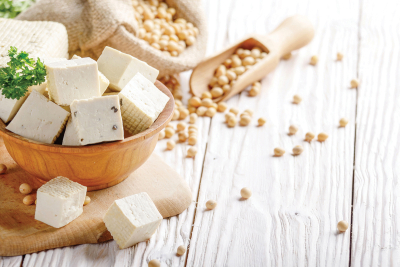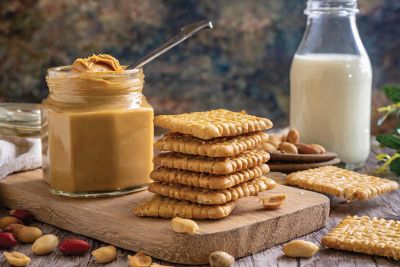The story of the fiddlehead
Fiddleheads are emerging from the leaf litter in our forests. Almost everyone, even those not especially interested in plants, has heard of fiddleheads and knows that they’re supposedly edible. Whenever I teach a plant identification workshop for the Smoky Mountain Field School or the North Carolina Arboretum or elsewhere, someone inevitably brings up the topic.
When leading field trips, my first response to fiddlehead queries is the obvious one. I point out that fiddleheads aren’t a species of fern but a growth form. Most fern species — to a greater or lesser degree — display the characteristic fiddlehead shape when they arise from the plant’s underground rhizomes. The “fern leaf” differs from the “true leaf” of the flowering plants in its vernation, or manner of expanding from the bud. In the ferns, vernation is circinate; that is, the leaf unrolls from the tip, with the appearance of a fiddlehead, rather than expanding from a folded condition.
This unfurling strategy helps the immature frond make its way upward through the soil and leaf litter. It also protects the developing leaflets (pinna) that will comprise the leafy portion of the mature frond. The first fronds to appear in a new season’s growth are purely vegetative; fronds unfurling later bear the spore capsules (sporangia).
The technical name for a fiddlehead is crozier (also spelled crosier). This is derived from the crooked end of a bishop’s staff, which is sometimes referred to as a pastoral staff. Such a staff has a curved top symbolic of the Good Shepherd and is carried by bishops of the Roman Catholic, Anglican, and some European Lutheran churches and by abbots and abbesses as an insignia of their ecclesiastical office and, in former times, of temporal power.
In addition to being highly functional, the emerging fiddleheads of some fern species are quite beautiful. Those of cinnamon fern (Osmundia cinnamomea) are a pale lime green and can stand a two feet or more high before unfurling. Species in the wood fern group (Dryopteris species) often display wooly greenish-brown fiddleheads.
But now we get to the heart of the matter. When most people bring up fiddleheads, they do so because they’ve heard they’re edible. They want to know which ones can be harvested for consumption. My answer is that few of the ferns in the southeastern United States where I live and work are edible. And the one that’s said be particularly tasty is also thought to be dangerous.
Related Items
Bracken (Pteridium aquilinum) is distributed world wide, being commonly found along roadsides and in disturbed areas with poor soil. They display exquisite silvery-gray fiddleheads shaped like an eagle’s claw. My wife and I have never eaten them, but they are reputed to be delicious. I doubt that light consumption of boiled bracken fiddleheads would be harmful to anyone; nevertheless, scientific research indicates the plant contains a number of toxic substances that readily kill livestock and might cause stomach cancers in human populations (as in Japan and China) that eat substantial amounts of the rootstock or fiddleheads.
Unfortunately for us, the North American fern species bearing fiddleheads that’s reputed to be the most delicious and absolutely safe to eat doesn’t grow wild in our region. That’s the ostrich fern (Matteuccia struthiopteris). Its distribution range has been described as Alaska to Newfoundland, south to British Columbia, Alberta, Saskatchewan, North Dakota, Missouri, Illinois, Indiana, Ohio, West Virginia, and Virginia in North American; Scandinavia, Central Europe, Russia, and Asia; with significant naturalization in Ireland and Great Britain.
This species is described as displaying emerald-green fiddleheads and, when mature, having clumping leaflets (somewhat like cinnamon fern) that taper all the way down to ground level. In this latter regard it resembles the well-known New York fern (Thelypteris noveboracensis), which is common throughout eastern North America as far south as Georgia. Although edible, I can attest that New York fern is not tasty, unless you like boiled cardboard.
The solution to the fiddlehead dilemma for persons living outside of the ostrich fern distribution area might be relatively simple. Ostrich fern is readily available from nursery sources listed on the Internet. It’s advertised as establishing “vigorous” stands rather quickly in damp, partially shaded situations. One Internet source that I located offers a “Pkg. of 2 - $5.75.”
Why not purchase, say, 8 plants from a reputable grower (i.e., one not harvesting them in the wild) and propagate them for home consumption (as with asparagus) once a stand is established? My wife and I have decided to do just that. We would appreciate hearing from anyone who has experience growing ostrich fern for consumption outside of its natural range.
There is an informative Internet site devoted to fiddleheads at, you guessed it, www.fiddle-heads.com.
George Ellison wrote the biographical introductions for the reissues of two Appalachian classics: Horace Kephart’s Our Southern Highlanders and James Mooney’s History, Myths, and Sacred Formulas of the Cherokees. In June 2005, a selection of his Back Then columns was published by The History Press in Charleston as Mountain Passages: Natural and Cultural History of Western North Carolina and the Great Smoky Mountains. Readers can contact him at P.O. Box 1262, Bryson City, N.C., 28713, or at This email address is being protected from spambots. You need JavaScript enabled to view it..













